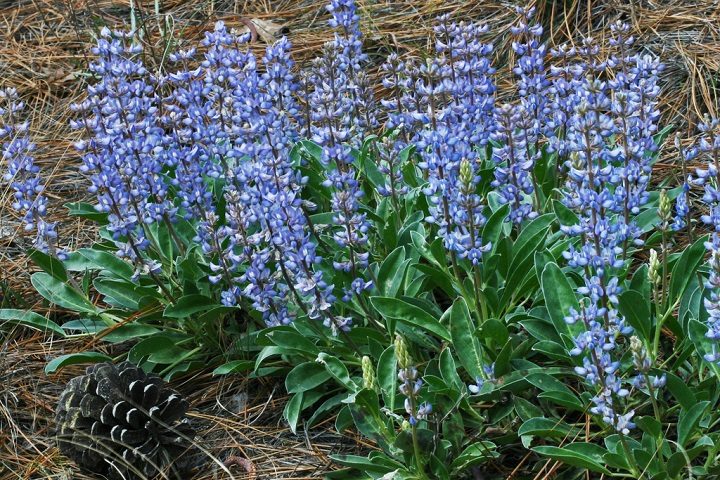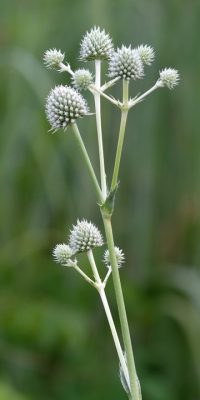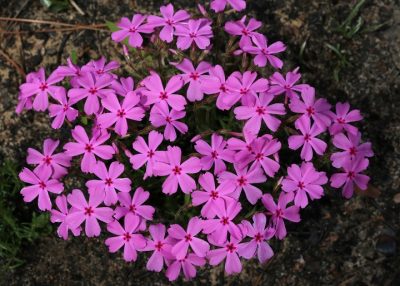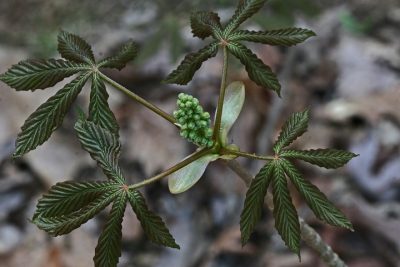
Birds, bees and butterflies are getting a little help from Audubon North Carolina.
The nonprofit conservation organization, which has offices in Corolla, Boone, Wilmington and Chapel Hill, announced Oct. 11, in time for fall planting, that its free, downloadable guide that helps identify the best plants for wildlife by habitat has been expanded from 400 to 692 native and cultivated plants that thrive in North Carolina.
Supporter Spotlight
“Since publishing our first 400 plant list four years ago, we’ve seen native plants soar in popularity,” said Audubon North Carolina Field Organizer Kim Brand in a statement. “Everyone from home gardeners to the governor and first lady of North Carolina are adding bird and pollinator-friendly plants to their backyards.”
The 700 list is a single source of recommended bird- and pollinator-friendly plants that can be filtered by habitat, food source type, animals benefited, wetland status and more.

“Our hope is that anytime a native plant sparks someone’s interest, they can go to our list for full information on what wildlife the plant attracts and how to choose a spot for the plant where it will thrive,” Brand told Coastal Review Online.
Brand said that Audubon North Carolina decided to expand its bird- and pollinator-friendly native plants list because, “From home gardeners to nursery managers to landscape architects, people found the 400 list very helpful. But even though it was 400 plants – a lot of plants – we realized that many great native plants that people might come across were not on the list, especially as native plants became more popular and nurseries began to stock more species.”
She explained that the first list developed in 2013 and 2014 was a monumental effort. “We were lucky enough that Lisa Lofland Gould and Susan Andrews were ready and willing to do the research to expand it to 700.” Gould and Andrews are Winston-Salem residents and volunteers for Forsyth Audubon and the Audubon North Carolina Bird-Friendly Communities Team. Gould, North Carolina native and author of “Coastal Plants from Cape Cod to Cape Canaveral,” founded Rhode Island Wild Plant Society.
Supporter Spotlight
The recently expanded list is not a comprehensive list of all native plants in the state but Brand said they expect the new version to last several years.
“Even with 700 species, I’m sure we’ll discover plants we want to add to the list,” she said. “We’ll update it just as we did with the 2014 list of 400 plants — in response to requests from people who use the list. For example, we included wetland status this time around because several city planners and stormwater managers asked for it.”
Every North Carolina species that appears in Larry Mellichamp’s “Native Plants of the Southeast: A Comprehensive Guide to the Best 460 Species for the Garden” and all North Carolina Botanical Garden “Wildflower of the Year” plants are included in the updated list.
Brand said that the 400-plant version of the Audubon North Carolina list was developed before Mellichamp’s “Native Plants of the Southeast: A Comprehensive Guide to the Best 460 Species for the Garden” was published in 2014.
“Dr. Mellichamp is an expert on the use of native plants in landscaped settings like home gardens, and it was a no-brainer for us to make sure our list includes all the plants he recommends in the book,” Brand explained.
“Similarly, folks at the North Carolina Botanical Garden are experts on native plants and we wanted to make sure we include all their ‘Wildflower of the Year’ plants, all of which are real attention-getters in the garden as well as being very valuable to pollinators and birds,” she said.
Brand explained that planting for birds is something anyone can do.

“All our gardens in yards across North Carolina are not only places for birds like wrens and cardinals to raise young and live year-round, they are also rest stops along the Atlantic Flyway – the superhighway in the sky along which millions of birds migrate south in the fall and north in the spring – for our migratory songbirds like the wood thrush, gray catbird and a variety of brightly colored warblers,” she explained. “The simple act of planting spicebush, American beautyberry, or dogwood in a yard can mean that robins and catbirds can refuel and continue their journey south.”
Brand said to find native plants in your area, “We have a terrific ZIP code locator at www.nc.audubon.org where people enter their ZIP code and get not only a list of recommended bird-friendly plants native to their area, but also their nearest Audubon chapter and a list of area businesses that sell native plants.”
Using the ZIP code locator, gardeners can refine the list of plants suitable for their area, specifically for plants that attract butterflies, caterpillars or specific groups of birds, for example, hummingbirds, cardinals and grosbeaks or thrushes, she explained.
“We encourage coastal North Carolina residents to ask their favorite garden centers to carry more native plants so they’ll become more readily available to everyone,” Brand added.
Charlotte Glen, state coordinator for the North Carolina Extension Master Gardener Program, said that the updated Audubon North Carolina list will be a helpful resource to determine which plants are native.
“When it comes to garden and landscape plants, there is not a standard definition of native. Nurseries may label plants as native, but that does not mean they naturally occur in North Carolina or the Southeast,” Glen explained. “Some nurseries label any plant that naturally occurs anywhere in the contiguous U.S. as native. To benefit birds and pollinators, gardeners should select plants native to their region. This list will help gardeners select plants that will provide the most benefit for local wildlife — plants from the local region.”
Glen said that native plants, along with the birds, pollinators, insects and the wildlife they nourish, support biodiversity needed to sustain ecosystem services.
“The services provided by nature include crop pollination, air and water purification, soil conservation and generation, the regulation of disease carrying organisms such as mosquitoes, balancing pest species, and moderation of weather and climate,” she said. “In addition, when native plants are selected for the site conditions and helped to establish, many make tough, low-maintenance and beautiful additions to landscapes. The birds, pollinators and other creatures they attract add a new dimension of life to yards and gardens.”

For those new to growing native plants, Glen said that fall is the best time to plant in the South because trees, shrubs and perennials planted during this period all have time to establish roots before heading into the heat of summer.
“You don’t have to start big — you can add a few new native species each year,” she added.
Glen recommended assessing what is already growing in your yard and when those plants bloom or set seed or fruit. Add varieties that bloom or fruit at times of the year when little else is blooming or fruiting in your yard. This will extend the habitat value of your landscape by making it a food source throughout the growing season. Try to include at least three different species that will bloom each season for pollinators.
“Plant in layers — diversity is greatest when there is a diversity of habitat — different species live at different levels, from ground level up to the tree tops,” Glen said. To get the most benefit in your yard, Glen recommended adding plants that fill in the missing layers, be it groundcover or herbaceous plants, shrubs, understory or canopy trees.
“Choose plants that are adapted to the site conditions in your yard,” she said, adding to consider sun and shade as well as soil type and drainage. “If your soil has become compacted or organic matter has been removed, amend your soil with compost before planting. Keep new plantings watered after planting and during drought that occurs within the first few years of planting.”
If you can’t find native plants at local nurseries, ask them to order the species you need, Glen said.







